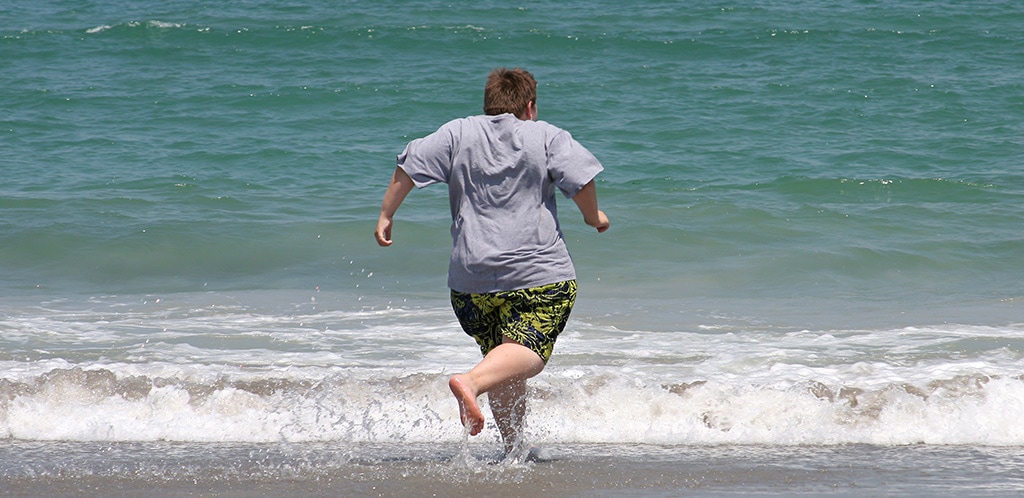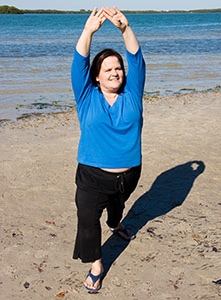Stand up paddle boards of all varieties come with a designated weight limit.This limit dictates the total amount of weight that can be put on board before the board’s performance is impacted.
However, the weight limit is unlikely to be exceeded by any human alone. But your weight might negatively affect the performance of the board, particularly of you’re using a board that is unsuitable for your height and weight.
Today, I’ll share with you what happens if you use a paddle board that cannot handle your weight. This guide will also help you understand how to pick out a paddle board that’s right for your size.
RELATED: Discover the Best SUP Boards for Heavy Riders of 2024
Am I Too Heavy for My paddle board? Signs to Look For
You’ll be able to tell rather quickly if you’re too heavy for your paddle board. This is especially true If you’ve gone paddle boarding with boards that are appropriate for your size before. Signs that your board might not be strong enough to support you include the following:
Riding Low
The magic of paddle boarding lies within the hard foam core inside your board. This foam has a lower density than the density of the water. This is what allows it to float when you push on it.
If you’re a heavier paddler and you’re pushing down on the board more than it can handle, then you’ll notice the SUP will start to ride low in the water. This makes paddle boarding difficult and strenuous.
Increased Drag
Because of the added strain being put on the board, your SUP may also display more of a drag when you paddle. An appropriately sized SUP should easily glide over the water with each paddle. However, too much weight can make this glide difficult, and result in a drag.
Difficulty Paddling
Because the paddle board will have a heavier drag, you may also notice that it is more difficult to paddle. Bigger paddlers will have a tougher time moving the water around them with their paddle because their board is sitting low in the water.
When you’re standing on an appropriately-sized paddle board, it should feel almost effortless when you’re using your paddle
Beware of the “Taco Effect” With an Inflatable Sup
Larger paddlers may sometimes experience the “taco effect” when they’re on an inflatable SUP board. When you’re standing in the middle of your paddle board, you may experience the center of the board dipping lower into the water while either end rides higher.
This “taco effect” can also be described as a sort of indent in the middle of the board caused by heavier paddlers. If you’re starting to notice this effect happening with your SUP board, this is an indication you might be too heavy for the paddle board.
Features to Look For if You’re a Heavier Paddler
If you’re a heavier paddler, there are some features to look for when shopping around for appropriate sized boards.
Shop Boards Suited for Your Weight
For starters, you want to make sure that the SUP can hold your weight. Your average SUP can hold anywhere from 200 to 300 pounds. However, you can also find SUPs that are suited for up to 500 pounds.
Look For a Stable Paddle Board
Larger paddlers will also benefit from a stand up paddle board that offers optimal stability. Typically, a stable paddle board will have a wider deck pad for equal distribution of weight.
Also, look for a board with a thickness of 5 inches, this will help you keep your balance as you stand.
ALSO READ: Can an overweight person paddle board?
Pick the Right Paddle Board for Your Size
If you weigh 200 pounds, don’t pick out a board that can accommodate a cap of 200 pounds. Additional gear you may bring with you will weigh you down and tip you over the board’s load capacity.
Also, it’s always best to leave a buffer of about 15% – 20% between your weight and the weight capacity of the paddle board.
Because heavier paddlers typically want more stability, you’ll also want to look for a wide board. Boards that are 34 to 36 in wide are incredibly stable for heavy paddlers.
Understanding Paddle Board Weight Limits
Paying attention to the weight limits of your board is an important feature to consider. Different brands feature different capacities to support different weights.
While one brand’s rec paddles may feature a limit of 200 pounds, some other brands’ specifications for a rec paddle can differ drastically. Always compare other brands to find a board that fits your needs.
Maximum Weight Limit vs. Practical Weight Limit
It’s important to understand the difference between maximum and practical load capacity when paddle boarding. Just because a board can hold up to 200 pounds doesnt mean it should.
The maximum weight limit of a SUP details the capacity it can hold before it begins to buckle or even sink. This limit is calculated by how much the rider weighs along with the weights of any additional gear they bring along.
Practical weight limit determines how heavy the load on top of the board can be before performance starts to deteriorate.
For example, an SUP rated for 200 pounds may begin to perform poorly once it reaches 185 pound load capacity. The board may begin to ride lower, drag more, and be difficult to maneuver.
Conclusion
The beauty of paddle boarding is that anyone can do it. However, it’s important to shop for stand up paddle boards that are right for your size.
I hope this guide has helped you understand how to identify if you need to switch up your stand up paddle board for a one with a greater weight capacity.


